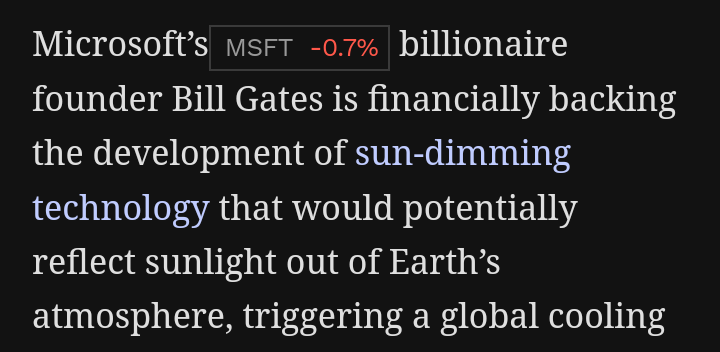From a grid stability point, you can’t produce more than is used, else you get higher frequencies and/or voltages until the automatics shut down. It’s already a somewhat frequent occurence in germany for the grid operator to shut down big solar plants during peak hours because they produce way more power than they can dump (because of low demand or the infrastructure limiting transfer to somewhere else)
Negative prices are the grid operator encouraging more demand so it can balance out the increased production.
Spot on! I hoped this comment would be higher! The main problem isn’t corps not making money, but grid stability due to unreliability of renewables.
To be fair, the original tweet is kinda shit to begin with. They’ve unnecessarily assigned monetary value to a purely engineering (physics?) problem.
Well I wasn’t expecting to find THE right answer in the comments already. Kudos!
And to everyone reading through this post: If you have questions, need more explanations or want to learn more about the options that we have to “stabilize” a renewable energy system and make it long term viable, just ask!
As someone with a technical background this is the stupidest problem with solar that I don’t get… just turn off the panels in groups until generation is closer to demand… how have engineers not figured that out. And if they have why does this still get written about.
Someone is an idiot. Maybe it’s me?
I’m adjacent to this problem, so I have a little context, but am not an expert at all.
To my knowledge, we don’t have granular control over panels. So we can shut off legs of a plant, but that’s a lot of power to be moving all at once.
Instead, prices are set to encourage commercial customers to intake more power incrementally. This has a smoother result on the grid, less chance of destabilizing.
A customer like a data center could wait to perform defragmentation or a backup or something until the price of power hits a cheap or negative number.
Thanks that’s helpful.
But right…?
Solar plants can be reduced to rationalize supply.
To my understanding. The bigger issue is you can’t as effectively do this with other non-renewables like coal/gas… so this not a solar problem but a problem of legacy power plants.
So stupid. The narrative as well.
Yea, more control over the panels will help with the overgeneration issue.
But there’s other issues like ramping supply to meet peak demand and general generation during non-solar hours that still have to be addressed.
Each have interesting proposals on how to solve them, but they haven’t been developed to the point that they’re ready to be put onto the grid at a large scale.
Piggybacking on your grid stability point, another issue I don’t see getting addressed here is ramp rate.
If we install enough solar where 100% of our daytime load is served by solar, that’s great. But what about when the solar starts to drop off later in the day?
A/Cs are still running while the sun is setting, the outside air is still hot. People are also getting home from work, and turning on their A/Cs to cool off the house, flipping on their lights, turning on the oven, etc.
Most grids have their peak power usage after solar has completely dropped off.
The issue then becomes: how can we serve that load? And you could say “just turn on some gas-fired units, at least most of the day was 100% renewable.”
But some gas units take literal hours to turn on. And if you’re 100% renewable during the day, you can’t have those gas units already online.
Grid operators have to leave their gas units online, running as low as they can, while the sun is out. So that when the peak hits, they can ramp up their grid to peak output, without any help from solar.
There are definitely some interesting solutions to this problem, energy storage, load shifting, and energy efficiency, but these are still in development.
People expect the lights to turn on when they flip the switch, and wouldn’t be very happy if that wasn’t the case. Grid operators are unable to provide that currently without dispatchable units.
If we install enough solar where 100% of our daytime load is served by solar, that’s great. But what about when the solar starts to drop off later in the day?
Store the surprus of energy from the solar panels and use that as a buffer with batteries or gravity
But some gas units take literal hours to turn on. And if you’re 100% renewable during the day, you can’t have those gas units already online.
Why not? Just time it and start it hours before, wind energy could help in that too
But the thing is, you CAN simply turn them off at the press of a button (or an automated script) so its really a complete non issue. As long as big solar installations control systems are accessible by the grid operators, it should be fine.
If you’re spending billions to build a solar plant that has to turn off all the time during peak hours then you’re wasting your money. That seems like a fundamental issue to me, not a non-issue.
Are there any solar plants that cost a billion dollars each?
Secondly, you want to over build solar, so that you have enough capacity during off peak hours. Grid storage is obviously the better solution, but seems not widely available enough yet.
Yeah yeah down with capitalism rah rah but if the electric company makes no money, how do they afford infrastructure maintenance?
Ok so we nationalize the electric company. Now taxes pay to keep up the electric grid?
I’m down for all of that, by the way. It’s a great solution. But there is absolutely, indisputably, 100% a problem here, and it’s childish to pretend that if evil corporations would stop being so greedy everything would magically fix itself. It’s completely valid to discuss this issue in terms of problems and solutions.
There’s absolutely a problem with how MIT Tech Review has phrased it. It could’ve been phrase like “modern power generation requires innovate solutions to the gride and large scale grid upgrades.” But no they blamed it has a Solar problem, not a grid problem.
I see headlines all the time such as “The US highways need a 1 Trillion investment in the next decade”. How come they aren’t phrased like “The problem with trucks and cars is that they destroy roads, leading to Trillions of cost to the taxpayer”. They’ve decided that transportation is non-negotiable and it’s needed. But renewable electricity is not?
That’s a fair point.
So what they are saying is that our current financial system is too focused on short term gains to cope with short term losses?
Sigh, when I grew up, I was allways taught to save money so that I have a buffer to fall back on. This concept seems to have completely gone out the window for busniesses lately.
I dislike the talk about how capitalism is bad as a general concept, but when seeing stuff like this I do agree with it in parts.
Ok, so let’s solve the issue.
There is too much electricity, so generating power to transmit to the network will cost us money.
This has an easy solution, just don’t transmit it to the network.
Build a battery facility where you store the power instead, infact if the price of electricity is negative, use the power on the grid and charge your batteries as well, I mean, when the electricity cost is negative, you are being paid to consume power.
Then when the sun goes down, and the electricity price goes up, you sell the charge you have in the batteries.
Depending on your location you could even set up a pumped storage system, where instead of batteries getting charged, you use the cheap excess energy to pump a resarvoir full of water, and release it when you need the power.
That’s really not an easy solution at all. It’s simple, conceptually, but it’s a huge series of projects. And expensive.
I know that, but with long term planning its fine.
This is a real problem for renewables.
You don’t get paid when the sun shines, and you don’t get paid for when it does not.
You had to pay for building the solar panels and maintaining them. Corporate greed aside none sane would like their tax money either to be spent on producing electricity when it’s not needed.
Next step for renewables must be storage that is cheap enough for it to beat having fossil fuel on standby.
Corporate greed aside none sane would like their tax money either to be spent on producing electricity when it’s not needed.
You need to set the corporate greed aside in your own mind, too (not saying you’re greedy, saying you’ve been indoctrinated to only see life in capitalist terms). Stop thinking in “cost” or “profit”, start thinking in “benefit” and “use”. Producing electricity when it isn’t needed is only a problem when someone is looking to make money off of it.
Producing electricity when it isn’t being used is problematic for the grid. So is producing too little.
Producing electricity when it isn’t needed is only a problem when someone is looking to make money off of it.
I never said it should be. There are plenty of ways to regulate electricity production, storage, and even usage, they just aren’t considered “profitable” so are dismissed, overlooked, and or deliberately smeared and destroyed because they threaten those whose profits they would hurt.
In this thread: a bunch of armchair energy scientists who think they’ve solved the energy storage problem all on their own.
Theres tons of ways that people with even a little brains could figure out, the problem is often cost or feasability.
A big burried water tank in my yard could be heated during the day and used to warm the house via underfloor heating at night, could do the reverse with chilled water in the middle of summer plumbed to an air recirculator with a heat exchanger. Its really simple engineering but expensive to implement.
I think an awful lot of people just dont understand the sheer scale of a lot of these problems, not the fundamentals.
It’s always economics.
There’s a joke I’ve heard that says something like anybody can build a bridge that stands, but it takes an engineer to build one that just barely stands (i.e., one where the materials and labor actually cost money).
That also reminds me of my first router - it was my PC. 10x the cost and 1/10 the features of a purpose built router, but I already had the computer and just needed to provide internet to 1 or 2 more via Ethernet.
Likewise, it’s easy to design energy storage concepts of all kinds. It’s a lot more tricky if you want it to be economically viable and see mass adoption.
The “problem” of negative energy costs is easy to solve, but quite costly.
Build water desalination/carbon capture and storage/hydrogen generation plants that only run when the price goes below 0; even though these are very energy intensive, they would help stabilize the grid.
Then build more solar; you want to try to have the daytime price stay in the negative as often as possible.
you want to try to have the daytime price stay in the negative as often as possible.
That’s not exactly conducive towards people building more solar.
The solar isn’t the goal; the energy is enabling the value in other parts of the economy.
In fact; energy supply is so important to the reasonable functioning of the economy. It should be taken out of the profit driven cycle of business.
Look at what happened with WPI in Ohakune and PanPack when energy prices sky rocketed a few months back.
it’s long past time we took businessman out of control and replaced them with scientists.
In which case they would choose Nuclear over Solar 9/10 times. I’m onboard
The real special bit is that this crap isn’t coming from, say Harvard, who one expects is all about business, but MIT which is supposed to be about Science and Engineering.
The media arm of MIT has been steaming garbage for years and constantly misrepresents the studies from their own researchers for clickbait.
But that aside, even though the engineering work out of MIT is solid, their economic opinions heavily reflect the fact that it’s an institution full of trust fund nepotism.
The grid needs to balance input and output. You can’t just “throw away” power.
It’s a real problem — not the “electric companies are losing money” part, but the “we need to keep the grid balanced” part.
That can indeed be a problem.
It is however not what the MIT guys wrote as being the problem: they quite literally said the problem with too much solar generation at peak times is that it drives prices down.
Also, curiously, the prices being driven down actually helps with the real technical problem that you point out: those consumers who can move their consumption times will tend to move them to those hours when the prices are lowest thus helping solve it. Same thing goes for investors: the more the price is pushed down at peak solar production times, the more appealing it is to invest in things like storage or even solutions with lower efficiency (such as green hydrogen or electricity transportation cables to markets less well served by solar).
The low prices aren’t the problem from a technical point of view, quite the contrary: they’re an incentive to invest in solutions (which is going to employ a lot of techies, so supposedly MIT would be all in favor of it)
Every time someone mentions “oh no solar is producing too much energy” I think of this deranged Forbes article from a few years back.

alt-text
Microsofts billionaire founder Bill Gates is financially backing the development of sun dimming technology that would potentially…{blahblah global cooling}
This is obviously in the context of attempting to mitigate global warming, which was caused by… you guessed it, mostly fossil fuel use.
Nobody is proposing blocking out the sun like Mr. Burns. More like reflecting a tiny percentage of solar radiation to prevent our oceans from boiling or once-in-a-century superstorms that, oh I don’t know, flood the mountains of Tennessee from becoming yearly occurrences.
Scientists: Hi here is a physical, technical, materially real limitation of most renewables that most of you should know about by now.
Shitforbrains shitter leftie: must be capitalism
If the technical limitation is “it drives down prices” then it is about capitalism, yes.
How do you even manage to not get that?
Having the cost of power go to zero is a bit of a problem if selling power is your business model, so it’s not exactly ideal for solar providers.
yeah that sure is a problem with everything needing to be profitable. I wish some people thought of a different system 100+ years ago
Price is a very effective way to control demand though, it’s a big part of the reason we have a spot price electricity market. Even when all out generators were state owned, they operated on a state owned enterprise model of operation.
yes that’s just further explanation within the confines of our current economic system, where productivity and well being are outcomes only when they align with profit
🙄
capitalist realism is a powerful drug but to the extent of eyes rolling back?
This is idiotic. The fact is your electricity transmission system operator has to pay a lot of money to keep the grid stable at 50 or 60Hz or your electronics would fry. With wind and especially with solar power, the variable output is always pushing the frequency one way or the other, and that creates a great need for costly balancing services. Negative pricing is an example of such a balancing service. Sounds good, but for how long do you think your electricity company can keep on paying you to consume power?
pay a lot of money to keep the grid stable at 50 or 60Hz or your electronics would fry
Absolutely not. Please don’t make things up.
People also don’t realize that too much power is just as bad as too little, worse in fact. There’s always useful power sinks: pumped hydro, batteries, thermal storage, but these are not infinite.
Stupid question but can we not like, make toggleable solar panels? Like if I Just pull the plug extracting power from a solar panel does it explode or break or something?
Not really. You can discharge into the ground, but for large installations even the ground has a limited (local) capacity.
Edit: explain yourselves, downvoting cowards
I have no idea what i am talking about… But what would happen if you pulled a black tarp over the panel? Could even be automatic like the blends on a building. And even partial.
That’s extremely expensive and not really scaleable.
You’re telling me a toggleable panel that flips when it needs to is too expensive? You’re already installing the panels. You’re already doing all that. The only difference is the material on the back side of the panel and of course some sort of crank and shaft to rotate it.
Or if only there was some sort of powered component that could rotate it when it reached the capacity you know since the name of the game is power
In addition to what allero said, you seem to only be considering future installations rather than existing ones. Retrofitting existing equipment is massively more expensive than changing a design prior to building it.





